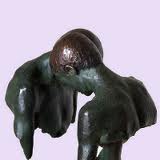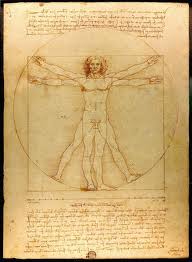A Review of Saving Leonardo: A Call to Resist the Secular Assault on Mind, Morals, and Meaning, by Nancy Pearcey
 Nancy Pearcey knows the captivating power of secular ideas because she used to hold them herself. As a teenager, she rejected the religion of her childhood and embraced a host of “ism’s” from moral relativism to scientific determinism to New Age spiritualism. But she persisted in her quest for truth only to find that the biblical worldview offers far better and more complete answers to the real world questions those philosophies attempted to address. For those of us who lack such intellectual stamina, her books serve like a museum tour of the long and winding journey by which she arrived at that conclusion.
Nancy Pearcey knows the captivating power of secular ideas because she used to hold them herself. As a teenager, she rejected the religion of her childhood and embraced a host of “ism’s” from moral relativism to scientific determinism to New Age spiritualism. But she persisted in her quest for truth only to find that the biblical worldview offers far better and more complete answers to the real world questions those philosophies attempted to address. For those of us who lack such intellectual stamina, her books serve like a museum tour of the long and winding journey by which she arrived at that conclusion.
The Soul of Science, coauthored with Charles Thaxton in 1994, defied the deeply embedded cultural myth which said that faith and science occupy mutually exclusive intellectual camps and showed how, quite to the contrary, scientific progress grew specifically out of Christian culture. How Now Shall We Live?, a joint effort with Charles Colson in 2004, fully developed the concept of worldview as an explanatory system that must fit all of reality. It must satisfactorily answer three foundational life questions: (1) Who am I and where did I come from? or the question of origins, (2) What’s wrong with the world? and (3) How can it be fixed? Pearcey and Colson argued persuasively that the biblical metanarrative of Creation/Fall/Redemption provides the most excellent answers to all three. Total Truth, Pearcey’s first solo, built upon the core insight of Francis Schaeffer, under whom she studied as a young adult. Shaeffer had observed that modernity has erected a “two-story” view of reality wherein objective “facts” occupy the lower story and subjective “values” occupy the upper. Total Truth showed how secularists use this fact/value split to banish biblical principles from public discourse, not by disproving them but by dismissing them out of hand.
In Saving Leonardo, Pearcey turns her attention to the arts and analyzes how this fact/value split has fragmented modern thought and therefore compromised modern art. Most people view art as simply personal expression, but Pearcey says this is not so. Art is much more than that. “Artists always select, arrange, and order their materials to offer an interpretation or perspective.” Art conveys ideas.
Saving Leonardo sets out to train us as consumers to thoughtfully “read” the art we take in, analyze it, and interpret it. Not to make us art critics, but to make us wise and effective change agents, equipped “to engage in discussion with real people seeking livable answers in a world that is falling apart.”
Secular Devolution
Part One examines the emerging global secularism and the toll it has exacted in human lives and dignity. Secularism is generally defined as the view that religious considerations and any beliefs based on the supernatural should be excluded from civil and public affairs. Today, secular ideologies control what our schools teach, how states govern, how economies are managed, and how (and what) news is reported. Secularism is sold on the premise that it provides a more enlightened ordering principle for social arrangements, but in reality it works to degrade, rather than advance, a society. It leads to:
Dehumanization. The idea that human rights are universal and inherent to individuals is a uniquely biblical concept. It rests on the understanding that human beings were created by God and bear his image. Without this foundation, grounded in transcendent reality, human rights and human dignity are demoted to just another competing interest. To illustrate how far out this precipice on which we already stand, Pearcey paraphrases pragmatist philosopher Richard Rorty, “Because of Darwin, we no longer accept creation. And therefore, we no longer need to maintain that everyone who is biologically human has equal value. We are free to revert to the pre-Christian attitude that only certain groups qualify for human rights.” What this translates into is a social order in which the strong can oppress, enslave, or exterminate the weak at will. This is how we got such twentieth century horrors as the Nazi Holocaust and the Soviet gulag.
Tyranny. Secularism preaches tolerance but practices tyranny. The biblical worldview unabashedly states that there is such a thing as an objective standard of right and wrong. The secular tenet of moral relativism is the direct converse of that principle. Simple logic says that both principles cannot be true, but secularizers try to have it both ways anyway. “If moral knowledge is impossible,” Pearcey points out, “then we are left with only political and legal measures to coerce people into compliance.” This explains why gay activists call opponents bigots and homophobes (usually in highly moralistic tones), rather than sit down to a good faith discussion over the risks of ditching “Don’t Ask, Don’t Tell.”
In fact, secularism advances, not by good faith reason and persuasion, but by brute hubris. The relativistic approach to religion dictates a certain set of beliefs that are just as exclusive as the claims of any religion; it just isn’t “honest” about it. This setup enables secularizers to dismiss opposing views, not by marshalling sound arguments against them, but by baldly excluding them or recategorizing them as private values which are then declared irrelevant.
 Double-mindedness. Secularism not only imposes a certain ideology, it effectively changes the definition of truth by dictating what kinds of information even qualify as truth. The fact/value split, Pearcey says, is “the key to unlocking the history of the Western mind.” It has fostered a kind of double-mindedness, both for individuals and among societies. It’s reflected in the comments of a 2008 Newsweek editor, “Reason defines one kind of reality (what we know); faith defines another (what we don’t know),” and in the words of Albert Einstein, “Science yields facts but not ‘value judgments’; religion expresses values but cannot ‘speak facts.’” It’s alive and well in the church too. Tim Sweetman, a teen blogger, noted that many of his peers seem like “double agents.” They “are Christians in church … but have a completely secular mind view. It’s as if they have a split personality.”
Double-mindedness. Secularism not only imposes a certain ideology, it effectively changes the definition of truth by dictating what kinds of information even qualify as truth. The fact/value split, Pearcey says, is “the key to unlocking the history of the Western mind.” It has fostered a kind of double-mindedness, both for individuals and among societies. It’s reflected in the comments of a 2008 Newsweek editor, “Reason defines one kind of reality (what we know); faith defines another (what we don’t know),” and in the words of Albert Einstein, “Science yields facts but not ‘value judgments’; religion expresses values but cannot ‘speak facts.’” It’s alive and well in the church too. Tim Sweetman, a teen blogger, noted that many of his peers seem like “double agents.” They “are Christians in church … but have a completely secular mind view. It’s as if they have a split personality.”
Logos: Truth In Toto
In the face of this pervasive, fragmented view of truth, Pearcey puts forward a game-changing alternative view. The nature of truth is holistic, comprehensive, and coherent. “Because all things were created by a single divine mind, all truth forms a single, coherent, mutually consistent system. Truth is unified and universal.” This is not new. It was the predominant view in Western culture for nearly two millennia. The ancient Greeks had a term for the underlying principle that unifies the world into an orderly cosmos, as opposed to randomness and chaos. They called it the Logos. And well into the 1900s, American universities were committed to the unity of truth. Even the word ‘university’ suggests the pursuit of whole, integrating truth. But the crack up has so fractured modern thought that ‘unity of truth’ presents a radically reoriented perspective.
This ‘whole truth’ perspective is what Pearcey urges us to bring to the arts.
Secularism: Truth Fragmented
Part Two begins with a crash course on how to discern worldview themes in a work of art. Using over one hundred reproductions and pictures to illustrate, Pearcey traces the intellectual currents that guided modern thought and shows how the two-story recasting of truth has manifested itself in the arts, from visual arts to music to literature to architecture. In the wake of the scientific revolution, philosophy – and therefore art – split into two opposing streams of thought. Occupying one camp was philosophical naturalism or the materialist stream, which accepted scientism’s exclusive claim to the realm of knowledge. In the other camp coalesced Romanticism, which rebelled against science and sought to protect everything else – theology, literature, ethics, philosophy, and the arts and humanities.
The materialistic view is reflected in such styles as Picasso’s intersecting lines, arcs, and geometric shapes and Jack London’s tooth and claw narratives of Darwinian survival of the fittest. Meanwhile, the Romantics produced such styles as Expressionism, the goal of which was pure expression of the artist’s “inner self,” indifferent to any outer reality. Consider Van Gogh’s dreamlike paintings. Or composer John Cage’s piano piece titled 4’33”, which is “performed” by playing absolutely nothing for four minutes and thirty-three seconds. Both streams deny the existence of any transcendent reality or truth beyond the artist or the work itself. If art is whatever you deem it to be, “nothing” qualifies.
But the definition of art as personal expression was a historical novelty. The traditional purpose of art, Pearcey stresses, was to convey “some deeper vision of the human condition.” Modern art has become disconnected from this purpose, and we must fill in the missing elements that can restore the vision of transcendent reality.
Can These Bones Live?

Doing that can take many forms. Here’s an example taken from Fox TV’s crime drama, “Bones.” Dr. Temperance Brennan, a forensic anthropologist, is the quintessential scientific rationalist. She’s called ‘Bones’ because she solves murders by examining human remains. Her colleague, FBI Special Agent Seeley Booth, possesses all the social finesse she lacks, believes in God, and mistrusts science. As a father he values relationships, and as a former army sniper, he’s haunted by guilt – two emotions utterly foreign to a materialist.
The relationship between Bones and Booth dances along a perpetual impasse because the two characters operate from completely different – in fact mutually exclusive – philosophical and intellectual universes. They are an excellent example of the dichotomized understanding of human existence. Their ongoing worldview clashes make for good TV drama, but real humans do not fall into one category or the other. More important, we don’t have to choose one or the other. We are both. “The biblical worldview fulfills both the requirements of human reason and the yearnings of the human spirit,” Pearcey writes, supplying the truth that’s missing from the “Bones” depiction of humanity.

In the modern era, ideological idols have led to death camps and dictatorships. Beliefs shape history, and worldview questions are a matter of life and death. Saving Leonardo challenges us to be prepared with worldview answers that preserve life and human dignity for all and restore art as a means of conveying truth.
Integrated truth that can make dry bones live.
This article first appeared in Salvo 16, Spring 2011.

